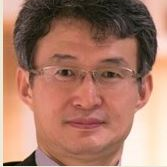Wound Repair and Regeneration 2.0
A special issue of International Journal of Molecular Sciences (ISSN 1422-0067). This special issue belongs to the section "Molecular Pathology, Diagnostics, and Therapeutics".
Deadline for manuscript submissions: closed (1 January 2021) | Viewed by 11863
Special Issue Editor
Interests: wound healing; inflammation; scarring; extracellular matrix; regeneration; biomaterials; chronic wounds; remodeling; stem cells; growth factors
Special Issues, Collections and Topics in MDPI journals
Special Issue Information
Dear Colleagues,
Wound healing plays an integral part in cellular and molecular events. This process is implicated in regeneration. Regeneration is also a process of restoring defects and disfigurement towards the original or more ideal states by cells, molecules, and environmental factors. Cellular and molecular events are orchestrated both spatially and temporally. When targeting each disease, understanding wound healing and the process of regeneration, as well as the findings of pathophysiology, will deliver new insights into realistic novel therapeutic options.
This Special Issue ‘’Wound Repair and Regeneration 2.0’’ calls for original articles, reviews, and perspectives that address the current knowledge and progress in the field of wound healing and regeneration by using conventional approaches as well as highly technologically advanced approaches. These include but are not limited to the fields that are mentioned in the keywords.
Prof. Dr. Sadanori Akita
Guest Editor
Manuscript Submission Information
Manuscripts should be submitted online at www.mdpi.com by registering and logging in to this website. Once you are registered, click here to go to the submission form. Manuscripts can be submitted until the deadline. All submissions that pass pre-check are peer-reviewed. Accepted papers will be published continuously in the journal (as soon as accepted) and will be listed together on the special issue website. Research articles, review articles as well as short communications are invited. For planned papers, a title and short abstract (about 100 words) can be sent to the Editorial Office for announcement on this website.
Submitted manuscripts should not have been published previously, nor be under consideration for publication elsewhere (except conference proceedings papers). All manuscripts are thoroughly refereed through a single-blind peer-review process. A guide for authors and other relevant information for submission of manuscripts is available on the Instructions for Authors page. International Journal of Molecular Sciences is an international peer-reviewed open access semimonthly journal published by MDPI.
Please visit the Instructions for Authors page before submitting a manuscript. There is an Article Processing Charge (APC) for publication in this open access journal. For details about the APC please see here. Submitted papers should be well formatted and use good English. Authors may use MDPI's English editing service prior to publication or during author revisions.
Keywords
- Wound healing
- Inflammation
- Scarring
- Extracellular matrix
- Regeneration
- Biomaterials
- Chronic wounds
- Remodeling
- Stem cells
- Growth factors
- Disease
- Pathophsyiogy
- Therapy






